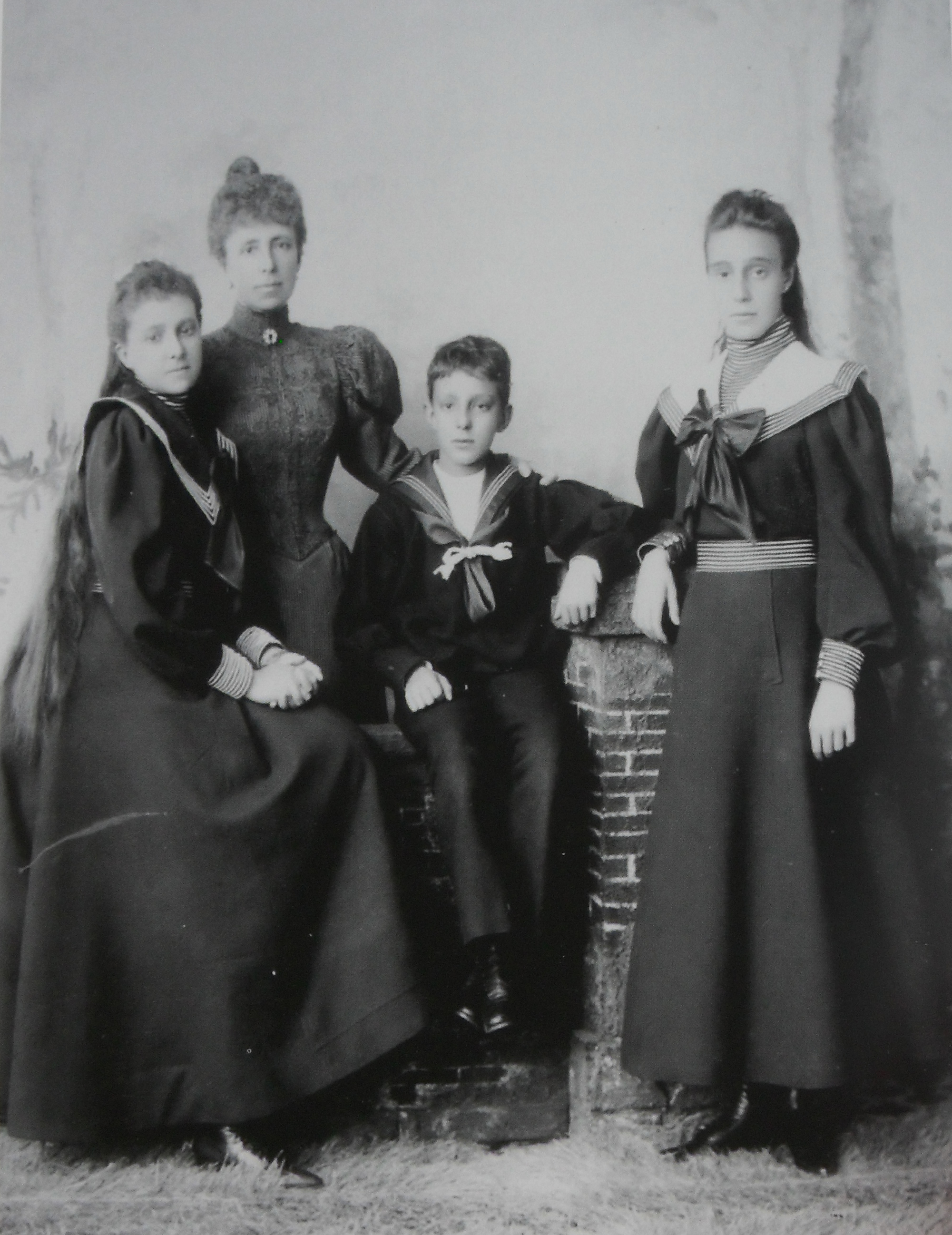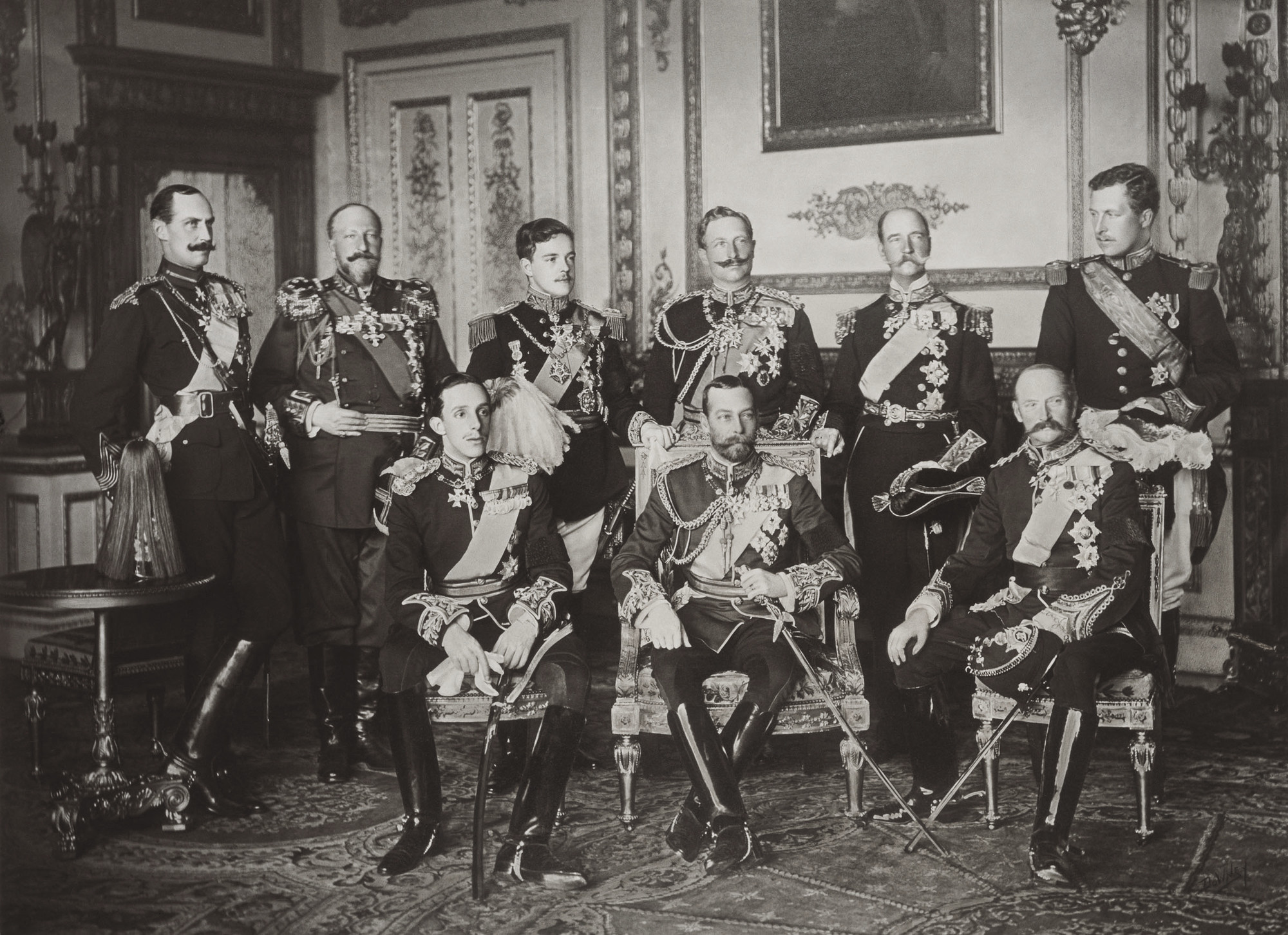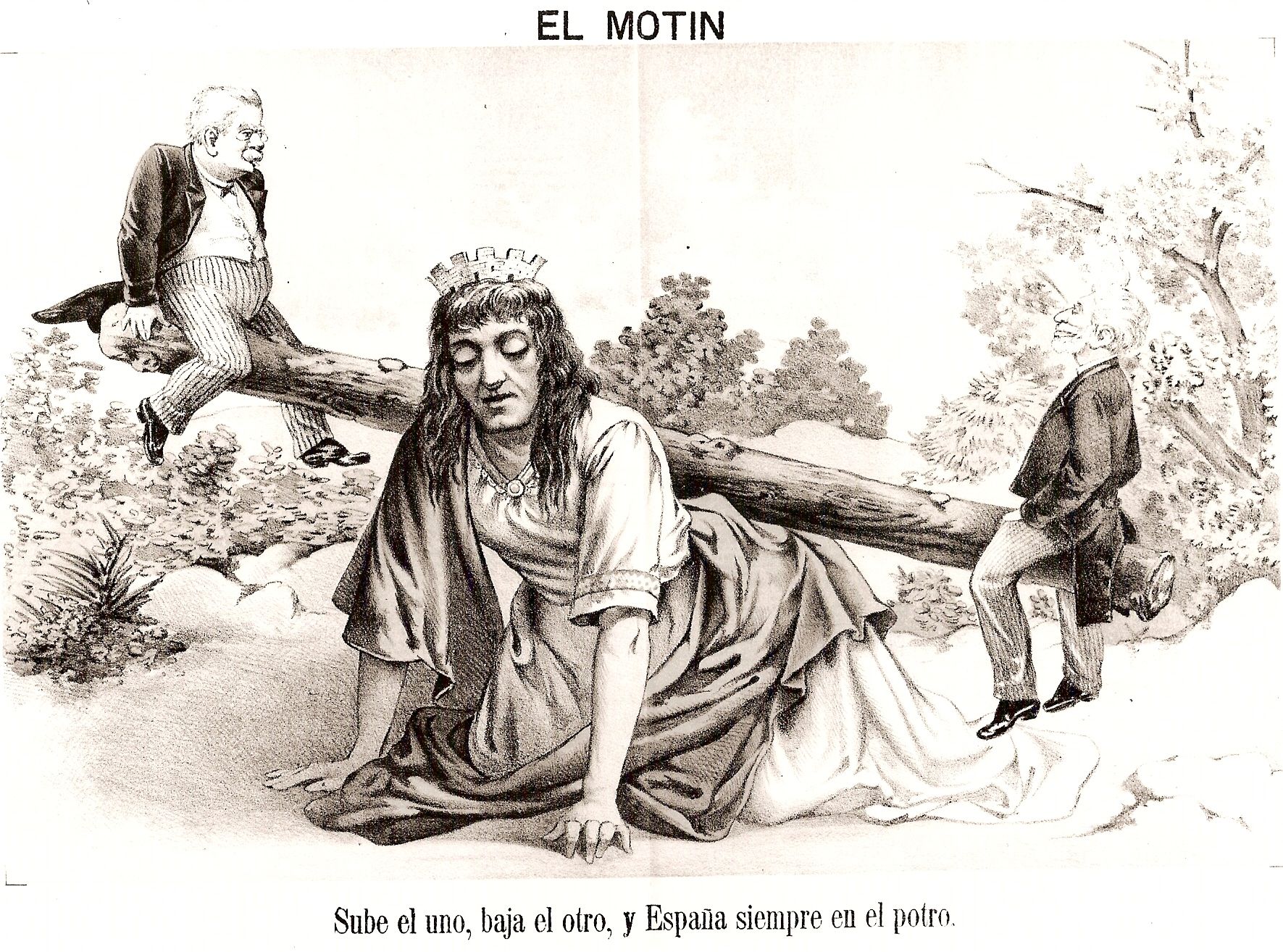|
María De Las Mercedes, Princess Of Asturias
María de las Mercedes, Princess of Asturias (''María de las Mercedes de Borbón y Habsburgo-Lorena''; 11 September 1880 – 17 October 1904) was the eldest child of King Alfonso XII of Spain and his second wife, Maria Christina of Austria. She was Princess of Asturias, the heiress presumptive to the Crown of Spain, for all 24 years of her life. Had her younger sibling, unborn at the death of Alfonso XII, been a daughter, Mercedes would have been Queen of Spain. The sibling proved to be a boy, Alfonso XIII, and on his birth in 1886, Mercedes turned out not to be queen. She resumed the position of heiress presumptive, which she held until her own death, and was succeeded in it by her own infant son Alfonso, Alfonso XIII having not yet married and fathered a legitimate child. Mercedes married in Madrid on 14 February 1901, her second cousin, Prince Carlos of Bourbon-Two Sicilies, a nephew of the King of the then-defunct Kingdom of the Two Sicilies, who was elevated to the r ... [...More Info...] [...Related Items...] OR: [Wikipedia] [Google] [Baidu] |
Princess Of Asturias
Prince or Princess of Asturias () is the main substantive title used by the heir apparent, or heir presumptive to the Spanish Crown. According to the Spanish Constitution of 1978: The title originated in 1388, when King John I of Castile granted the dignitywhich included jurisdiction over the territory of AsturiasSuárez González 2000, p. 395. – to his first-born son Henry. In an attempt to end the dynastic struggle between the heirs of Kings Peter I and Henry II of Castile, the principality was chosen as the highest jurisdictional lordship the King could grant that had not yet been granted to anyone.Suárez González 2000, p. 394. The custom of granting unique titles to royal heirs had already been in use in the Crown of Aragon ( Prince of Girona) and the kingdoms of England (Prince of Wales), and France (Dauphin of Viennois).Coronas González 2001, p. 53. The title, therefore, had two purposes: to serve as a generic title to name the heir apparent or heir presumptive, ... [...More Info...] [...Related Items...] OR: [Wikipedia] [Google] [Baidu] |
Alfonso XIII
Alfonso XIII (Spanish language, Spanish: ''Alfonso León Fernando María Jaime Isidro Pascual Antonio de Borbón y Habsburgo-Lorena''; French language, French: ''Alphonse Léon Ferdinand Marie Jacques Isidore Pascal Antoine de Bourbon''; 17 May 1886 – 28 February 1941), also known as El Africano or the African for his Africanist (Spain), Africanist views, was King of Spain from his birth until 14 April 1931, when the Second Spanish Republic was proclaimed. He became a monarch at birth as his father, Alfonso XII, had died the previous year. Alfonso's mother, Maria Christina of Austria, served as regent until he assumed full powers on his sixteenth birthday in 1902. Alfonso XIII's upbringing and public image were closely linked to the military estate; he often presented himself as a soldier-king. His effective reign started four years after the Spanish–American War, when various social milieus projected their expectations of national regeneration onto him. Like other European m ... [...More Info...] [...Related Items...] OR: [Wikipedia] [Google] [Baidu] |
Infanta Maria Teresa Of Spain
Infante (, ; f. ''infanta''), also anglicised as "infant" or translated as "prince", is the title and rank given in the Iberian kingdoms of Spain (including the predecessor kingdoms of Aragon, Castile, Navarre, and León) and Portugal to the sons and daughters (''infantas'') of the king, regardless of age, sometimes with the exception of the heir apparent or heir presumptive to the throne who usually bears a unique princely or ducal title.de Badts de Cugnac, Chantal. Coutant de Saisseval, Guy. ''Le Petit Gotha''. Nouvelle Imprimerie Laballery, Paris 2002, p. 303, 364–369, 398, 406, 740–742, 756–758 , . A woman married to a male ''infante'' was accorded the title of ''infanta'' if the marriage was dynastically approved (e.g., Princess Alicia of Bourbon-Parma), although since 1987 this is no longer automatically the case in Spain (e.g., Princess Anne d'Orléans). Husbands of born ''infantas'' did not obtain the title of ''infante'' through marriage (unlike most hereditar ... [...More Info...] [...Related Items...] OR: [Wikipedia] [Google] [Baidu] |
Gaceta De Madrid
La Gaceta may refer to * ''La Gaceta'' (Honduras), the official journal of the Republic of Honduras. * ''La Gaceta'' (Tampa), a trilingual newspaper in Tampa, Florida, United States * ''La Gaceta'' (Tucumán), a newspaper in San Miguel de Tucumán, Argentina * ''La Gaceta'' (Spain), a Spanish newspaper * '' La Gaceta Mexicana'', a Mexican-American newspaper published in Houston, Texas, United States * '' La Gaceta de Panamá'', a Panamanian digital newspaper See also * The Gazette (other) {{disambiguation ... [...More Info...] [...Related Items...] OR: [Wikipedia] [Google] [Baidu] |
Práxedes Mateo Sagasta
Práxedes Mariano Mateo Sagasta y Escolar (21 July 1825 – 5 January 1903) was a Spanish civil engineer and politician who served as Prime Minister on eight occasions between 1870 and 1902—always in charge of the Liberal Party—as part of the '' turno pacifico'', alternating with the Conservative leader Antonio Cánovas. He was known as an excellent orator. Biography Mateo Sagasta was born on 21 July 1825 at Torrecilla en Cameros, province of Logroño, Spain. As a member of the Progressive Party while a student at the Civil Engineering School of Madrid in 1848, Sagasta was the only one in the school who refused to sign a letter supporting Queen Isabel II. After his studies, he took an active role in government. Sagasta served in the Spanish Cortes between 1854–1857 and 1858–1863. In 1866 he went into exile in France after a failed coup. After the Spanish Revolution of 1868, he returned to Spain to take part in the newly created provisional government. He served ... [...More Info...] [...Related Items...] OR: [Wikipedia] [Google] [Baidu] |
Isabella, Princess Of Asturias (1851–1931)
Infanta Isabel of Spain (; 20 December 1851 – 22 April 1931) was the oldest daughter of Queen Isabella II of Spain and her husband Francisco de Asís, Duke of Cádiz. She was the heiress presumptive to the Spanish throne from 1851 to 1857 (heiress to her mother Isabella II) and from 1874 to 1880 (heiress to her younger brother Alfonso XII). She was given the title Princess of Asturias, which is reserved for the heir to the Spanish crown. In 1868, she married Prince Gaetan, Count of Girgenti, a son of King Ferdinand II of the Two Sicilies. Gaetan died by suicide three years later. Infanta Isabel was a prominent figure at the Spanish royal court during the reign of her brother King Alfonso XII and during the minority of her nephew King Alfonso XIII. She was the most popular member of the Spanish royal family for most of her life. After the fall of the monarchy of Alfonso XIII, she refused the offer of officials of the Second Spanish Republic to continue to reside in Spain. She ... [...More Info...] [...Related Items...] OR: [Wikipedia] [Google] [Baidu] |
Antonio Cánovas Del Castillo
Antonio Cánovas del Castillo (8 February 18288 August 1897) was a Spanish people, Spanish politician and historian known principally for serving six terms as Spanish Prime Minister, prime minister and his overarching role as "architect" of the regime that ensued with the Restoration (Spain), 1874 restoration of the Bourbon monarchy. He was assassinated by Italian Anarchism, anarchist Michele Angiolillo. As leader of the Conservative Party (Spain), Liberal-Conservative Party—also known more simply as the Conservative Party—the name of Cánovas became symbolic of the alternate succession in the Restoration regime along with Práxedes Mateo Sagasta's. Early career Born in Málaga as the son of Antonio Cánovas García and Juana del Castillo y Estébanez, Cánovas moved to Madrid after the death of his father where he lived with his mother's cousin, the writer Serafín Estébanez Calderón. Although he studied law at the Complutense University of Madrid, University of Madrid ... [...More Info...] [...Related Items...] OR: [Wikipedia] [Google] [Baidu] |
Infanta
Infante (, ; f. ''infanta''), also anglicised as "infant" or translated as "prince", is the title and rank given in the Iberian kingdoms of Spain (including the predecessor kingdoms of Aragon, Castile, Navarre, and León) and Portugal to the sons and daughters (''infantas'') of the king, regardless of age, sometimes with the exception of the heir apparent or heir presumptive to the throne who usually bears a unique princely or ducal title.de Badts de Cugnac, Chantal. Coutant de Saisseval, Guy. ''Le Petit Gotha''. Nouvelle Imprimerie Laballery, Paris 2002, p. 303, 364–369, 398, 406, 740–742, 756–758 , . A woman married to a male ''infante'' was accorded the title of ''infanta'' if the marriage was dynastically approved (e.g., Princess Alicia of Bourbon-Parma), although since 1987 this is no longer automatically the case in Spain (e.g., Princess Anne d'Orléans). Husbands of born ''infantas'' did not obtain the title of ''infante'' through marriage (unlike most hereditar ... [...More Info...] [...Related Items...] OR: [Wikipedia] [Google] [Baidu] |
Mercedes Of Orléans
María de las Mercedes of Orléans (24 June 1860 – 26 June 1878) was List of Spanish consorts, Queen of Spain as the first wife of King Alfonso XII. She was born in Madrid, the daughter of Prince Antoine, Duke of Montpensier, and Infanta Luisa Fernanda of Spain. Death Shortly after their honeymoon, it became evident that Queen Mercedes suffered from typhoid fever. The marriage would last only five months and three days, during which she reportedly had a miscarriage. She died due to the fever on 26 June 1878, at 18 years old. Legacy The news of her demise spawned many folk songs accounting for it, most notably the famous Copla (meter), ''copla'', with many variations in Spain and America, particularly popular among children delivered as a song accompanying a skipping rope game. According to Benito Pérez Galdós, he had already heard about it a few days after the incident: “''¿Dónde vas Alfonso XII? ¿Dónde vas triste de ti? Voy en busca de Mercedes que ayer tarde no ... [...More Info...] [...Related Items...] OR: [Wikipedia] [Google] [Baidu] |
Paris
Paris () is the Capital city, capital and List of communes in France with over 20,000 inhabitants, largest city of France. With an estimated population of 2,048,472 residents in January 2025 in an area of more than , Paris is the List of cities in the European Union by population within city limits, fourth-most populous city in the European Union and the List of cities proper by population density, 30th most densely populated city in the world in 2022. Since the 17th century, Paris has been one of the world's major centres of finance, diplomacy, commerce, culture, Fashion capital, fashion, and gastronomy. Because of its leading role in the French art, arts and Science and technology in France, sciences and its early adoption of extensive street lighting, Paris became known as the City of Light in the 19th century. The City of Paris is the centre of the Île-de-France region, or Paris Region, with an official estimated population of 12,271,794 inhabitants in January 2023, or ... [...More Info...] [...Related Items...] OR: [Wikipedia] [Google] [Baidu] |
Isabella II Of Spain
Isabella II (, María Isabel Luisa de Borbón y Borbón-Dos Sicilias; 10 October 1830 – 9 April 1904) was Queen of Spain from 1833 until her deposition in 1868. She is the only queen regnant in the history of unified Spain. Isabella was the elder daughter of King Ferdinand VII and Queen Maria Christina. Shortly before Isabella's birth, her father issued the Pragmatic Sanction to revert the Salic Law and ensure the succession of his firstborn daughter, due to his lack of a son. She came to the throne a month before her third birthday, but her succession was disputed by her uncle Infante Carlos (founder of the Carlist movement), whose refusal to recognize a female sovereign led to the Carlist Wars. Under the regency of her mother, Spain transitioned from an absolute monarchy to a constitutional monarchy, adopting the Royal Statute of 1834 and Constitution of 1837. Isabella was declared of age and began her personal rule in 1843. Her effective reign was a period mar ... [...More Info...] [...Related Items...] OR: [Wikipedia] [Google] [Baidu] |
Infant Baptism
Infant baptism, also known as christening or paedobaptism, is a Christian sacramental practice of Baptism, baptizing infants and young children. Such practice is done in the Catholic Church, the Eastern Orthodox and Oriental Orthodox churches, various Protestant denominations, and also in other denominations of Christianity.Brasher, B. (Ed.). (2001). ''Encyclopedia of fundamentalism: Volume 3 of religion & society'' (p. 47). Berkshire Publishing Group. The practice involves baptizing infants born to believing parents as a means of initiating them into the Christian faith. Supporters of infant baptism cite biblical references to the baptism of entire households in the New Testament, as well as Jesus’ teachings on welcoming children, as justification for this approach. In contrast, Believer's baptism, believers' baptism (credobaptism) is based on the premise that baptism should be administered only to individuals who can personally profess their faith. Those who support this view ... [...More Info...] [...Related Items...] OR: [Wikipedia] [Google] [Baidu] |






